- What Are The Natural Resources Of Nepal?
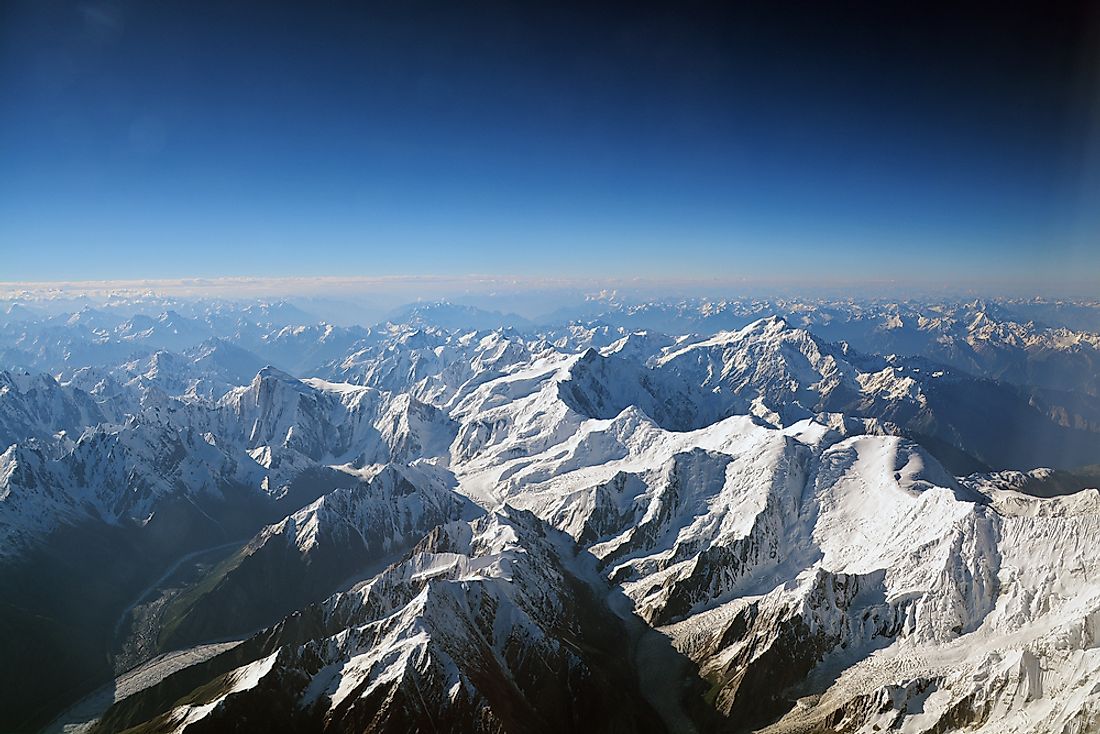
Officially known as the Federal Democratic Republic of Nepal, Nepal is a country that is located in South Asia. The landlocked country lies mostly in the Himalayas although parts of it also lie in the Indo-Gangetic Plain. The nation has an area of about 56,827 square miles, which makes it the 93 rd largest country in the world in terms of size. Regarding population, Nepal is the 48 th largest nation in the world with a population of around 26.4 million people. The country is bordered by China, India, and Bangladesh. The nation’s capital city is Kathmandu, which is also the largest city.
Unfortunately, Nepal is among the least developed states in the world due to lack of any significant resources as well as a poor transport network. Another fact that contributes to this low level of development is the landlocked nature of the country. For this reason, the country mostly relies on imports in a wide range of things such as fuel, consumer goods, construction materials, metals, and other things. The few resources in the country include precious minerals and metals (such as iron ore, copper, magnesite, and others), water resources for hydroelectric power, agricultural land, and forests.
Most of the terrain in the country, about 80%, is hilly. However, research into the country’s hilly terrain has shown that there are a few deposits of metallic, non–metallic minerals, fuel minerals, and decorative minerals. These minerals include the likes of gold, limestone, mica, iron ore, copper, and others. While there are suspected oil deposits in places such as Pyuthan, Nepalgunj, and Dailekh, there have been no confirmations on the matter. Natural gas deposits are suspected to be in places like Mustang, the Kathmandu Valley, and a few other districts.
Limestone is mined in places such as Surkhet, Hetauda, and Chovar and has always been used to produce cement in the country. Another mineral, magnesium, is mined in a number of places such as at the Kampughat mine. Despite the few mineral resources, the mine at Kampughat in the Sagarmatha Zone has deposits of about 20 million tons of ore, of which 30% is magnesium. These deposits make Nepal one of the leading global producers of magnesium.
A lack of modern technology and equally skilled labor means that the country has been unable to produce these minerals at maximum levels. Should the government make the proper investments, then the sector has the potential of creating new industries as well as create new employment opportunities. In addition, the government regulations are a discouraging factor to multinational companies wishing to invest in the sector.

Agricultural Land
Nepal is divided into three portions namely Terai, Hilly, and Himalayan. The majority of the population in Nepal is poor and still depends on farming agriculture for sustenance. Of the total area of Nepal, about 17% is suitable for agriculture, which is mostly in Terai and Hilly. Rocky land covers about 38% of the country, which is mostly in Himalayan. In addition, the area around Himalayan has mountains that are covered by snow, which further makes that section unsuitable for agriculture.
Of the two arable sections, Terai is more suitable for farming due to higher levels of fertility. For this reason, this area is sometimes known as the Green Belt of Nepal. Most of the agricultural products produced by the country come from the belt and are then exported to the other two sections of Nepal. The farmers there cultivate a number of plants including wheat, rice, oilseed, sugarcane, paddy, jute, tobacco, maize, coconuts, and many other plants. Hilly regions are also used for some agricultural activities such as the production of rice, wheat, potatoes, maize, paddy, and a few other things. After supplying the other regions, Nepal usually has little left for exportation although some products such as rice are exported to other countries.
Forest Cover
This natural resource covers a huge part (about 25.4%) of Nepal. The forest cover is classified into three types namely protected, production, and conserved forests. Forests serve several purposes such as the production of firewood as well as timber for industrial purposes. Industrial uses of trees include industries such as paper, timber, and furniture. Industries that deal with wood include the government-owned Timber Corporation of Nepal and a few others. Other people also depend on the forests to extract medicinal herbs. In addition to all of these benefits, the forest provides a habitat for animals and birds.
Revenue generation from the forests is realized in a number of ways. For example, Nepal exports its timber products to several countries although the main export destination is the nearby India. Tourism is also a source of revenue as visitors from all around the world go to Nepal for the scenery. In the hilly areas, forest cover has been helping in preventing the erosion of precious arable land. Unfortunately, deforestation is still a major problem, which is why temperatures are increasing while agricultural yields are going down.
Nepal is one of the richest countries in the world terms of water resources. In fact, only Brazil has more water. The fact that the country is leading in terms of water resources despite being landlocked shows just how much water it has. The water in Nepal comes from several sources including melting snow and mountains. Nepal has a number of major rivers including Karnali, Bhotekoshi, Koshi, Sunkoshi, Gandaki, and many more. Lakes in the country include Tilicho, Rara, and Phewa.
Primarily, water is used for a number of functions namely drinking and household use, irrigation projects, and generation of hydroelectricity. Interestingly, the abundance of these resources has done nothing to alleviate a water shortage in the capital city and other major settlements. In addition, the country’s maximum potential for the production of hydroelectricity has not been met. Estimates place the country’s potential for electricity production at a whopping 83,000 MW. Currently, the country can only produce a measly 600 MW. To improve the situation, Nepal is working on a number of projects including nine major power plants while considering another 27 sites for future exploration. In addition, the government has a number of projects such as the Melamchi water project to supply water to Kathmandu.
More in Economics

Who Is On Canadian Money?

The 10 Largest Gold Mines In The World

The Least Developed Countries In The World

The Most Important Technological Advancements in History

The 10 Largest Uranium Mines In The World

The Poorest Counties In The United States
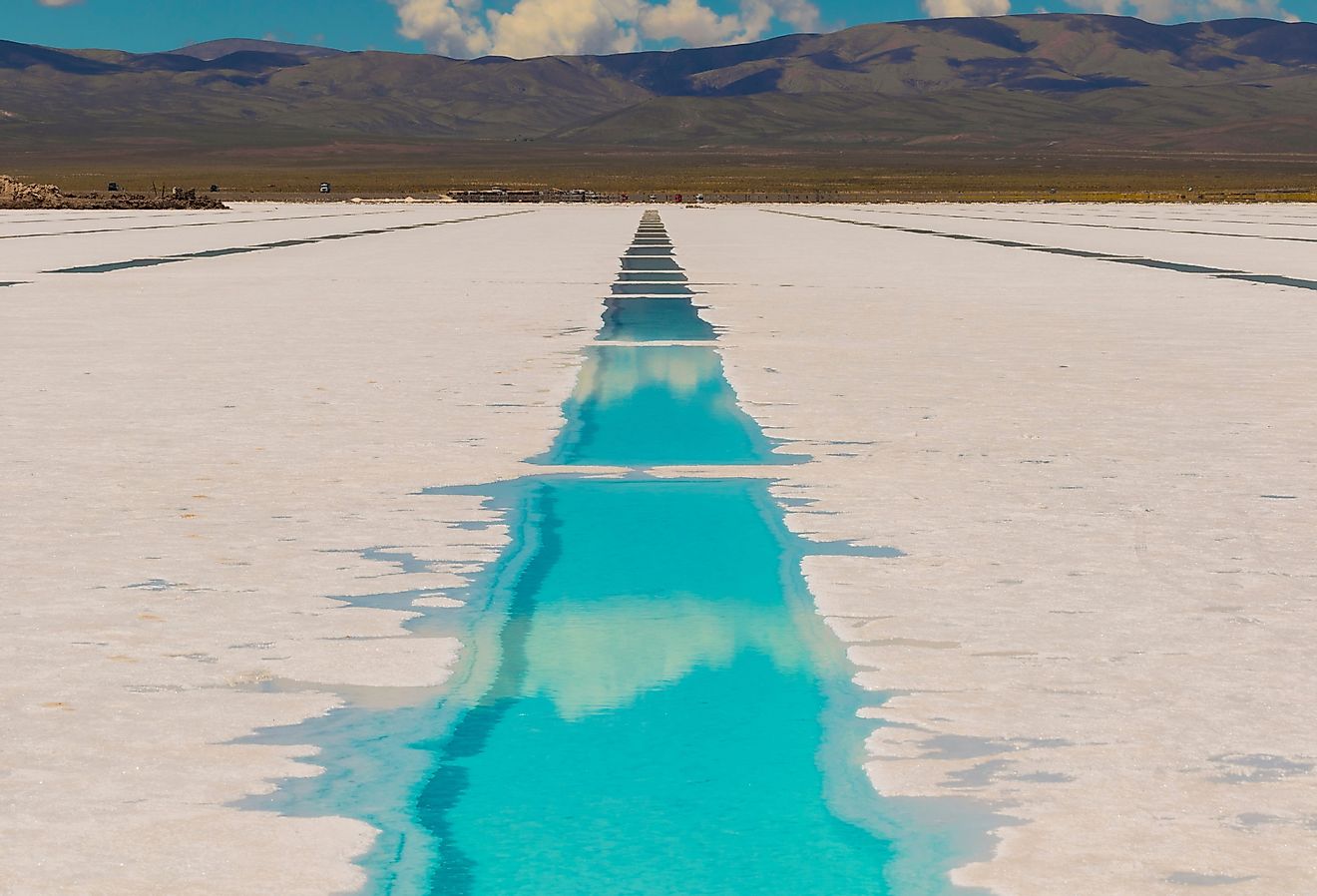
The 10 Largest Lithium Mines In The World

The Richest Counties In The United States

- Privacy Policy
- _Terms and condition
- _Contact us
Importance of natural resources in Nepal
importance of natural resources in nepal, you may like these posts, post a comment.
If you have any doubt or topics, please let me to know i will try to solve your doubt and write post on your topics
Search This Blog
Social plugin.

Popular Posts

Industrialization

All things about Nepal
Contact form, advertisement, recent posts, recent in tech, menu footer widget.
- Login / Register

- Intenet & Communication
- Electronics
- Information Technology
- Data science and AI
- Biotechnology
- Marketing & Sales
- Startups & Business
- Imports & Exports
- Stock & Investment
- Manufacturing
- Agricultural
- Religion and Culture
- Hotel and Tourism
Natural Resources
- Metals & Mining
- Infrastructure
- Renewable Energy
Join Our Newsletter
Join our subscribers list to get the latest news, updates and special offers directly in your inbox
Natural Resources of Nepal: Key to Development
Explore the natural resources of nepal, such as its mineral, forestry, and water resources. learn the importance of properly utilizing natural resources for the sustainable development of nepal..

Natural resources are free gifts from nature, which include land, climates, forests, water, minerals, etc. Nepal is rich in natural resources. If Nepal could utilize the available natural resources properly, it would be developed within a short period of time. Most developed countries have got prosperity from the proper utilization of natural resources, and only the proper utilization of natural resources makes a country prosperous.
Water Resources:
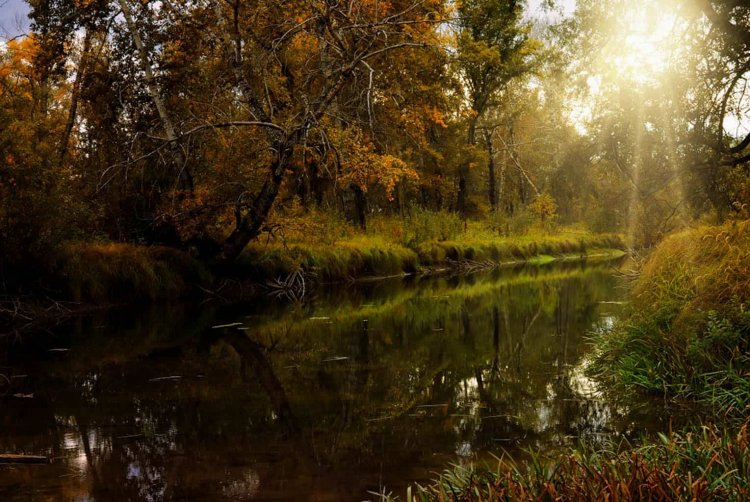
Among all the natural resources of Nepal, water resources are regarded as one of the most important. There are more than six thousand rivers, including major and minor, with a length of more than 4500 Km. There are a large number of lakes and springs as well. Koshi, Narayani, Gandaki, Rapti, Veri, Karnali, Mahakali, etc. are the major rivers of Nepal. Likewise, Rara, Phewa, Begnas, Tilicho, etc. are the major lakes. Nepal's regular sources of water resources are the Himalayan glaciers and rainfall. With regard to water resources, Nepal stands in the 43rd position in the world with approximately 210 cubic kilometers of total renewable internal freshwater resources. Water resources are also termed "white gold" for the Nepalese economy. If the available water resources are properly utilized, Nepal can easily be converted into a developed country.
Importance of water resources:
Development of agriculture.
The development of agriculture entirely depends upon the development of irrigation in Nepal. Nepalese agriculture still depends on monsoon rain. The development of irrigation and modernization of agriculture depend directly on water resources.
Development of transportation and communication
Energy generated from water resources can be used to run electric means of transport such as electric buses, cable cars, electric trains, ropeways, and other electric vehicles. Similarly, with proper water resource utilization, means of communication such as telephone, internet, fax, radio, TV, and so on can be developed.
Tourism development
Tourism in Nepal has a close relationship with natural setting. Since rivers, waterfalls, natural springs, lakes, etc. add the natural beauty of the country; it would help to develop tourism industry by providing different facilities like rafting, boating, and swimming and etc.
Basis of good health
Development of water resources helps to provide pure drinking water which leads to basis of healthy life. It helps not only to increase the productivity of labour but also to raise of living standard of people.
Employment opportunity
The development of water resources helps to create more employment opportunities. Since hydroelectricity helps to develop agriculture, tourism, etc. the economic activities in the country increases.
Uses of water resources:
Hydroelectricity.
One of the main uses of water resources is hydroelectricity production. The first hydroelectricity project is the Pharping hydroelectricity project, which was constructed in 1968 BS during the Rana rule. Hydroelectricity is accessible to 77 districts of the country, and 93% of the population has access to electricity.
Irrigation is another important use of water resources in Nepal. It is known as the lifeblood of agriculture. Without irrigation facilities, the development of agriculture is not possible, and without the development of agriculture, economic development is not possible in Nepal. One of the main reasons behind the slow development in the agriculture sector is the lack of adequate irrigation facilities. Of the country's total 2,641,000 hectares (18%) of arable land, the irrigation command area is only 1,766,000 hectares (67%). By 2020/21, the command area of irrigation facilities had reached 58.07% of total irrigable land. However, around the year, irrigation facilities are available on 33% of total irrigable land.
Drinking water
Drinking water is essential for human existence. Human life is impossible without drinking water. Although Nepal is rich in water resources, people here face an acute shortage of safe drinking water in both urban and rural areas. The supply of sufficient safe drinking water to all the people in the state creates a good environment for achieving prosperity in the economy. According to the census of 2068, 47.84% of people have access to pipeline drinking water and 35% use the sallow-tube well for drinking water. According to the economic survey 2020/21, 91% of people have access to basic drinking water services. However, only 23% of people have access to high or medium-level drinking water services. The fifteenth plan (2019/20-2023/24) has set the target of providing drinking water facilities to 99% of the total population.
Forest Resource:
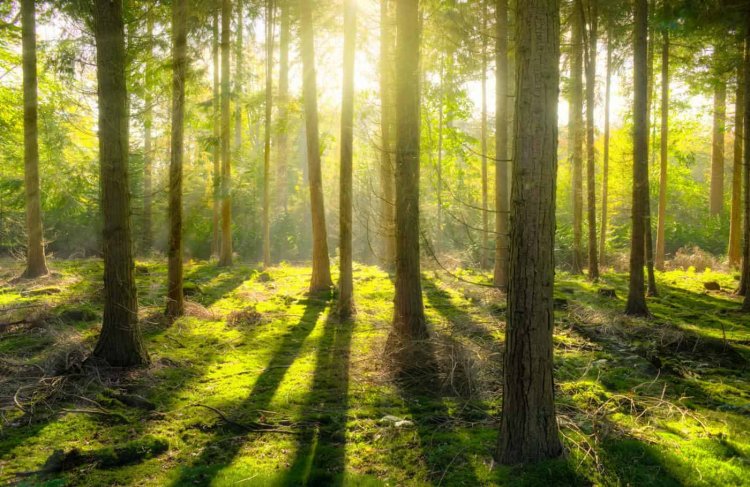
Forest resources are the other most important natural resources of Nepal. It stands in a significant position for economic development as well as to maintain the environmental balance of Nepal. Forest resources are the most important for the economic development of a nation as well as for the conservation of the natural environment. Nepal was very rich in forest resources in the past. It is evident from the old saying "Hariyo Ban Nepal Ko Dhan" (the green forest is the wealth of Nepal). Nowadays, the condition of Nepalese forest resources is not as good as it was in the past. In Nepal, forests have covered 5.962 million hectares of land and wooded land has covered 0.648 million hectares of land. Altogether, the total area covered by forest is 44.8% of the total land area. By province, Karnali province occupies the highest forest areas, and province No.2 occupies the lowest.
Importance of Forest Resources:
Source of energy.
Forest resources are the main source of energy in Nepal. Firewood is the cheapest source of energy that comes from the forest. According to the 2011 census, only firewood fulfils 64% of the total energy demand of Nepal in household use.
Source of raw material
The raw materials for different industries, such as paper, medicine, plastics, matches, and furniture, come from the forest. As a result, the development of such industries is heavily reliant on a consistent and sufficient supply of raw materials from the forest.
Sources of foreign currency
Various products such as timber, herbal products, industrial raw materials, and wooden handicrafts are collected as well as produced from the forest and can be supplied to neighboring countries to earn foreign currency.
Sources of water
Most of the water resources originate from green hills and mountains. Dense forests absorb rainwater, regulate it into the earth through their roots and help to preserve water at inner levels, and enrich the water table constantly.
Maintain environmental and ecological balance
Forests influence local and regional climates, preserve soil and in the case of watersheds, protect soil downstream from floods. Forest resource also provides internal greenery and natural beauty to us. It is very important to maintain an ecological balance between wildlife habitats and human beings.
Mineral Resource:
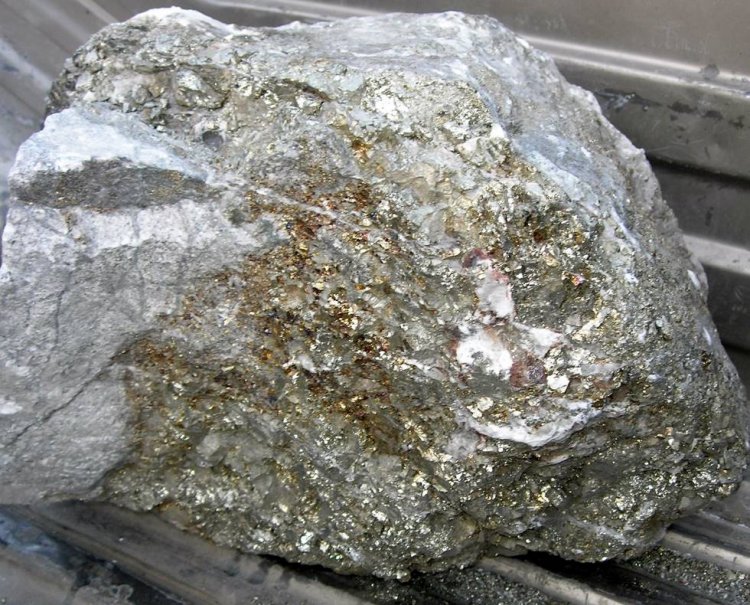
It is very important to have natural resources for the economic development of a nation. Different types of minerals, such as gold, silver, copper, coal, gas, petroleum products, limestone, iron, etc., which are found in the womb of the earth are mineral resources. Mineral resources play an important role in the economic development of a nation. It is said that Nepal is rich in mineral resources. However, the extent to which commercial utilization of mineral resource deposits is possible is yet to be known. Nepal has many kinds of mineral deposits such as iron, copper, limestone, natural gas, coal, lead, magnetic, nickel, marble, and mica in different parts of the country. Mineral exploration in a scientific manner started in Nepal some 73 years ago. Some of the mineral resources have been used in industrial production, like cement, industrial lime, dead burnt magnetite, polished marble, etc.
Importance of mineral resources:
Employment opportunities.
Mineral industries require unskilled, skilled, and highly skilled manpower, which creates employment opportunities for all types of human resources.
Development of new industries
The development of new industries from cottage/micro industries to large-scale industries depends on mineral resources. Agriculture limes, zinc, and cement are the main industries of Nepal based on mineral resources.
Source of foreign currency
If Nepal extracts large quantities of minerals such as natural gas, diesel, petrol, kerosene, iron, copper, etc. it can save and earn a large amount of foreign currency.
Modern means of transport, such as air, road, and water, and means of communication, such as television, radio, computers, telephones, faxes, etc., are produced by the utilization of mineral resources. Hence, the development of transport and communication is highly dependent on the proper development of mineral resources.
Supply of construction material
Different development projects are in operation in different sectors of the economy. Development projects need a high amount of construction materials such as brick, cement, steel, copper, etc. which can be supplied cheaply and adequately if we develop the mineral resource properly.
Frequently Asked Questions (FAQ)
What natural resources are important to nepal and why, what is the most prominent natural resource in nepal, what are the natural resources of nepal, how do water resources contribute to nepal's development, how do forest resources contribute to nepal's economy, what mineral resources are found in nepal, how do mineral resources contribute to employment opportunities in nepal.
- Natural resources of Nepal
- water resources of Nepal
- Forest resources of Nepal
- Mineral resources of Nepal
- resources of Nepal
Previous Article
The Business Model of Online Insurance
Next Article
The Ancient Power of Nepali Rudraksha: A Comprehensive Guide to Its Origins and...
What's your reaction.

Alisha Dahal
Related Posts
Rhododendron: National Flower of Nepal
Anisha Khanal Dec 2, 2023 0
The World's Biggest Garbage Dump: Mount Everest
Rima jha Jun 4, 2023 0
Geo-resources in Nepal: Opportunities and Challenges
Anisha Khanal Apr 7, 2023 0
Mount Lhotse: Climbing Achievements & Challenges
Swostika Shrestha Nov 7, 2023 0
Rising Rice: The Emergence in Nepal
Rima jha Jun 5, 2023 0
Stacks of lakes in Nepal
Alisha Dahal Oct 11, 2022 0

Enquiry To Travel Guide
Popular posts.
Top 5 richest person in Nepal
Alisha Dahal May 30, 2023 0
Brain Drain in Nepal: Causes, Consequences, and Solutions
Alisha Dahal Jun 23, 2023 0
Alisha Dahal Sep 12, 2022 3
The Current State of Business in Nepal: Challenges and...
Anisha Khanal Feb 19, 2023 2
Industrial Development in Nepal: Importance, Sectors, Challenges,...
Anisha Khanal Feb 10, 2023 0
Recommended Posts
The Ancient Power of Nepali Rudraksha: A Comprehensive...
Bhushan Lamsal Apr 2, 2024 0
Is AI Boon or a Bane ? AI Good or Bad
Anish Timalsina Mar 30, 2024 0
The Psychology of Decision Making
Bijay Bastola Mar 27, 2024 0
The Rise of Plant-Based Meat Alternatives
Anisha Khanal Mar 19, 2024 0
The Impact of Genetically Modified Organisms (GMOs) on...
Swostika Shrestha Mar 7, 2024 0
Random Posts
Explore the rise of plant-based meat alternatives, their health benefits, and positive...
Brodox: Revolutionizing the Business Industry in Nepal
Anisha Khanal Aug 5, 2023 0
Brodox is revolutionizing the online selling industry in Nepal. Learn how Brodox...
20 Essential Lessons on Personal Finance from "Finance...
Binod Shrestha Apr 19, 2023 0
Learn 20 essential personal finance lessons from "Finance for the People: Getting...
Supporting Local Business and Culture: The Nepali Local...
Anisha Khanal Feb 6, 2023 0
Explore how supporting local businesses and preserving traditional crafts can benefit...

Sustainable Hydropower Projects: Harnessing Clean Energy...
Anisha Khanal Feb 1, 2023 0
Learn about the efforts to make hydropower projects more sustainable, reducing their...
Popular Tags
- personal finance
- Trekking in Nepal
- digital marketing
- cultural heritage
- Agriculture
Voting Poll

- Abroad Study
- Purbanchal Result
- Purbanchal Routine
- Exam Routine
- Lok Sewa Aayog
- Scholarship
- Nepal Telecom
- Price in Nepal
Select Page
Natural Resources of Nepal Forest | Soil | Water | Minerals
Last updated Aug 15, 2023 |
Natural resources are any resources that exist on this planet due to nature. They are similar to sunlight, minerals, water, air, soil, and forests. Because of the accessibility of these natural resources, life is conceivable on Earth. Without these resources, life would not have been conceivable on Earth. In this essay, let’s discuss Nepal’s natural resources.
Nepal, which has 147,181 square kilometres and a population of about 30 million, is located between China and India. Nepal is a landlocked nation as a result. It covers 0.01% of the world’s surface and 0.1% of Asia. The tallest peak in the world, Mount Everest, is Nepal’s claim to fame. Nepal’s natural resources include minerals, water, land, and forests.
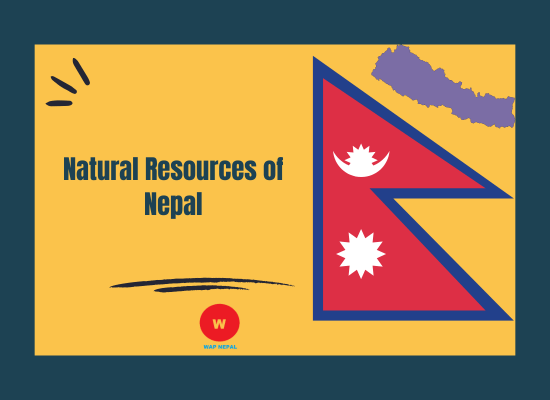
Table of Contents
One of Nepal’s primary natural resources is the forest. The FAO estimated that 25.4% of Nepal’s total land area was covered by forests in 2005. However, in the current situation, this percentage has drastically changed. The land formerly covered in the forest has been converted into cultivable land due to rapid population growth and unchecked urbanisation. Therefore, the government of Nepal has split forest regions into three groups to safeguard and conserve them. They are conserved forests, managed for productivity, and protected.

Nepal is an agricultural nation, and a sizable portion of its population still relies on the forest for fuel. In addition to that, the forest is essential to numerous sectors, including those that produce paper, furniture, and lumber. Nepal’s forests are the source of the medicinal herbs used to make medications. Despite this, substantial amounts of spices are transported to other nations due to a dearth of pharmaceutical production companies.
Wild animals and birds can also be found in forests. There are many conservation areas in Nepal which has aided in preserving the animals and the forest. These protected regions serve as a draw for tourists visiting Nepal. It has aided in strengthening the nation’s economy. Forests significantly reduce landslides and floods. It supports environmental ecosystem balance. The forest must therefore be preserved.
Since more than 70% of the population still relies on agriculture, soil is another crucial natural resource in Nepal. Only 147,181 square kilometres, or roughly 0.01% of the world’s land, is occupied by Nepal. Nepal is a landlocked nation that is split into three main regions. They are Himalayan, hilly, and Terai.
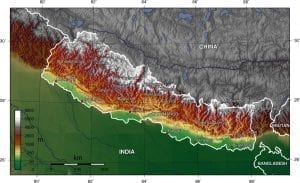
In the plain and level Terai, 17% of the land is suitable for cultivation. Since the majority of agricultural products such as rice, wheat, jute, paddy, tobacco, sugarcane, oilseed, potatoes, coconut, maize, etc., are exported from Terai to Hilly and Himalayan, it is also known as Nepal’s “green belt.” Although the terrain is hilly and mountainous, some areas are appropriate for growing crops such as rice, paddy, potatoes, wheat, and maize. Snow, mountains, and rocks cover the Himalayan. Consequently, farming is challenging in this area. They mostly import products from Terai and Hilly. On the other hand, medicinal herbs are widely available in the Himalayan region.
In Nepal, various types of soil are available. They are like alluvial, rocky, sandy, lacustrine, and mountain soil.
Nepal has abundant sources of water. After Brazil, Nepal is considered the second most prosperous country in water resources. The significant water sources in Nepal are mountains, glaciers, and snow. There are eight mountains whose height is above 8000m and many glaciers and ponds in the Himalayan region that flow as rivers in the Hilly and Terai regions. Rivers like Karnali, Bagmati, Seti, Kaligandaki, Mahakali, Koshi, Gandaki, Bhotekoshi, and Sunksohi are famous in Nepal. Similarly, lakes like Rara, Phewa, Tilicho, and Shey Phoksundo are famous tourist spots in Nepal that thousands of tourist visit yearly.
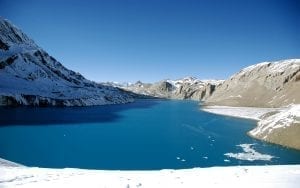
Since water is an essential natural resource in Nepal, it has been used in producing electricity, irrigation projects, drinking purposes, household activities, fish farming, etc. Nepal can produce a large megawatt of electricity, but it has failed to do so, so Nepal is suffering from massive load shedding. People of the capital city are facing a scarcity of drinking water. Agriculture in Terai has not been effective due to the lack of water. As a whole, the availability of this natural resource has not been able to be fully utilized by the government of Nepal.
Nepal is rich in minerals which are another important natural resource available here. There are many minerals, like metallic, non-metallic, fuel, stones, etc., found mostly in the mountainous part of the country. Gold, limestone, mica, copper, and irons are also available in Nepal, based on research. It has been recently researched that Nepal has a possibility of petroleum products in the cities like Nepalgunj, Biratnagar, Dailekh, and Pyuthan. The research is going on, and if possible, there is the possibility of establishing the petroleum industry in Nepal soon. Similarly, minerals like limestone are used for cement production. They are found in Surkhet, Hetauda, Chovar. A research team has revealed that Kathmandu and Mustang have abundant sources of natural gasses available, but it is not officially confirmed yet.
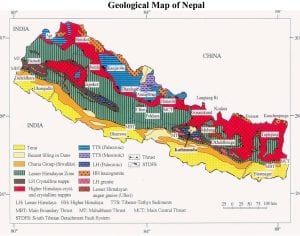
Nepal is a developing country that lacks modern technology, skilled manpower, and capital to extract minerals and establish mining industries. The government makes no hard and fast rule, so even if the international company wants to invest their capital in our minerals, they don’t have any authorization. It takes a long process. The government of Nepal needs to focus on this matter since it will help to solve the unemployment problem in Nepal at some level.
Natural resources are a very important factor in the survival of human beings. They need to be protected, conserved, and properly utilized. Since Nepal is taking a step forward in development, it needs to protect and conserve its natural resources by formulating strict rules and regulations.
Leave a reply Cancel reply
Your email address will not be published. Required fields are marked *
RECENT POSTS
- NEB Class 12 Exam Routine 2081 BS for All Subjects & Faculties
- Powering the Future: Exploring the Rise of Electric Cars in Nepal
- Top Eye Hospital in Nepal for Best Eye Care Health Treatment
- IQ Questions in Nepali (Dimag Khane Questions)
- NEB Grading System for Class 11 and Class 12
- Nepal VIP Ranking: Maryadakram (मर्यादाक्रम) – Order of Precedence
- IRD PAN SEARCH
- Nepal Army Salary Scale Rank-wise Benefits & Allowances
- Top TV Shows and TV Series in Nepal
- Significance of Bhaktapur: 5 Places to Visit
- Swimming Pools in Kathmandu: Your Guide to the Best Dips
- Poco Mobile Price in Nepal
- Benco Mobile Price in Nepal
- Latest Realme Mobile Price in Nepal
- Xiaomi Redmi Mobile Price in Nepal 2023 2024
- WishesinEnglish
- Birthday Wishes
- Hindi Wishes Shayari
- Nepali Wishes Shayari
- Write for us
- April Fools Day 2024
4 Major Natural Resources of Nepal
Natural resources refer to such type of resources that exist naturally in the earth without any human effort. They are like water, atmosphere, soil, sunlight, natural forest, and minerals. These natural resources are the main source of the human life exists in the Earth. But, in this article, we are going to discuss the natural resources of Nepal.
Nepal is a landlocked country in between two big giant countries, China to the north and India to the East, west, and south. It lies in South East Asia with an area of 147181 sqm. km.Let us discuss the natural resources of Nepal.
Major Natural Resources of Nepal
1. forest – major natural resources of nepal.

Forest is one of the major natural resources of Nepal. About 25.4% of Nepal’s land is covered by forest. This figure is according to FAO in 2005. Nepal’s forest has been classified as protected, conserved and production forest. Forest is the main source of firewood in Nepal. Similarly, paper, furniture and timber industry are dependent on the forest. Many medicinal herbs are available in the forest. It is also the home of the different animals and birds. Forest, in fact, supports the whole life cycle of the environment.

There are many forest conservation areas in Nepal which have been the home to many animals, birds, and vegetation. It has added beauty to our country since many tourists come to visit this lovely forest. Similarly, it has also been helpful in controlling the landslides and soil erosion in the Hilly and Terai areas of Nepal. But in some couple of years, deforestation rate is so high that we are losing our natural forest. This is the reason that the temperature of the major cities of Nepal has increased and it also leads to the natural calamities. We should protect our natural forest so that we can live a healthy life.
Advertisement
See also: Forest in Nepal
2. Soil/Land- Major Natural Resources of Nepal

Nepal occupies only 0.1 percentage of the total land of the world. Its total area is 147,181 sq. Km. It is divided into three parts – Terai, Hilly, and Himalayan. The soil is one of the most important parts of Nepal as most of the Nepalese still are depended on agriculture and farming. Only 17% of total land is cultivable which is in Terai and Hilly while 38% of the land is rocky, Mountains and snow filled that is in Himalayan. So, people of Terai and Hilly are dependent upon agriculture.

Terai land is more fertile. So, agriculture is more productive in Terai, It is also called the green belt of Nepal since most of the agricultural products are cultivated in Terai and exported to Hilly and Himalayas. They cultivate rice, wheat, jute, paddy, tobacco, sugarcane, oilseed, potatoes, coconut, maize etc. Similarly, in hilly areas, rice, paddy, potatoes, wheat, maize are grown. Himalayan areas are not good for agriculture, however, there are large medicinal herbs available in the Himalayan forest.
Various type of soil is available in Nepal. They are like alluvial soil, rocky soil, sandy soil, lacustrine soil and mountain soil.
Don’t Miss: Soil and Land in Nepal
3. Water- Major Natural Resources of Nepal

Water is one of the major natural resources of Nepal. In fact, it is the second richest country in water resources after Brazil. There are many sources of water, especially like mountains, glaciers, and snow. Since Nepal is a landlocked country, it has no any sources of water from sea or oceans. However, nature has provided abundance sources of water. There are many large rivers like Karnali, Seti, Koshi, Gandaki, Bhotekoshi, Sunkoshi and many small ponds, waterfalls and small streams. There are also many lakes like Rara, Phewa, Tilicho, Shey pho ks undo lakes which are also the sources of water.

Water has been used especially in the generation of electricity, irrigation projects, drinking and household works. But still, the people of Nepal are not able to get adequate water resources. The capital city Kathmandu is still scarce of water and electricity. However, in the present days, there has been no lack of electricity but if the hydroelectricity projects are not completed in time, it is sure to face major load shedding in the coming days. The on-goingMelamchi project is also set to quench the thrust of people of Kathmandu soon. Hope, our government will properly utilize the water resources of our country.
See Also: Drinking Water in Nepal
4. Minerals- Major Natural Resources of Nepal

More than 80% of the land in Nepal is Mountainous. It has been researched that there are various minerals resources like metallic, non-metallic, decorative stones, fuel metals in the mountainous region. Similarly, minerals like gold, mica, limestone, and iron ore, copper are found in various parts of Nepal. It is even researched that Nepal has petroleum resources at Nepalgunj, Pyuthan, Dailekh. Limestone found in Hetauda, Chovar, Surkhet has been used for the cement production by the major cement factories. Kathmandu valley, Mustang and few others districts of Nepal are supposed to be the major sources of natural gasses but they are not confirmed yet.

Due to the lack of well-skilled technology and the manpower, Nepal is not able to extract the minerals. If Nepal government gives priority to the mining industries, then there will establish a large number of mining industries in Nepal that can generate employment opportunities and the people of Nepal should not have to go abroad for works. Even the international companies are interested in establishing such industries but due to the lack of proper rules and regulations and uncertain government, they are not getting the good environment to invest.
don’t miss: Minerals and mines in Nepal
These are the major the natural resources of Nepal. Our country is rich in natural resources but we are not able to utilize it. We are the second richest country in water but we lack adequate drinking water. We lack the electricity as many rivers are flowing freely through which we can generate thousands of electricity. We have the natural vegetation but we lack the medicinal industries. We have many minerals resources but we have to export from next countries since we have no any mining industries. We have the most cultivable land in Terai but we have to export foods from India.
This is all due to the lack of proper utilization of our natural resources. Until we don’t utilize it, the economy of our country will not rise.
Related terms and posts about natural resources in Nepal
Major Natural Resources of Nepal Water pollution in Nepal Soil resource in Nepal Land resource in Nepal Mines resources in Nepal Minerals resources in Nepal Forest resources in Nepal
Related Posts
Celebrating the spirit of freedom: reflecting on nepal’s democracy day.

A Day of Reflection: What Democracy Means to Nepal in the 21st Century

The Most Popular Traditional Sports in Nepal

How Does a Nepali Welcome a Guest?

Three Remarkable Nepalese Figures Who Shaped History

6 Best Music Stores Around Kathmandu Nepal

Recent Posts
- New Beginnings: Craft the Perfect New Year’s Greeting Card with These Inspirational Quotes (49 Quotes Cards)
- How to Download OnlyFans Purchased Video | Ultimate Guide 2024
- Winning Against the Odds: Real Stories of Big Wins in Online Slots
- Happy Nepali New Year 2081: Quotes and Images to Inspire a Fresh Start
- Love In Every Frame: Nepali Couple’s Lovely Romantic Moment in the Bedroom (23 Images)

- Privacy Policy
© 2023 Wishes, Messages, Travel, Lifestyle, Tips in English, Hindi and Nepali Mount Everest. Legal Support by Quotes .
- Travel, Information And Lifestyle Blog For Nepal & Nepalese People

Chapter-9 Natural Resource of Nepal
Natural Resources of Nepal
# Introduction to Natural Resources
Ans :- A natural resource is something that is found in nature and can be used by people. Natural resources include land, climate, forest, water, mineral, etc. There are two types of natural resources. They are:
i) Renewable natural resources:- Renewable natural resources are those resources which can be renewed even after use. For example, water, forest, solar energy, etc.
ii) Non-renewable natural resources:- Non-renewable natural resources are those resources which can’t be renewed after once it is used. For example, coal, natural gas, natural oil, etc.
1. What do you mean by water resources? Explain the importance of water resources in Nepal.
Ans:- A water resource is the most important natural resources of Nepal. Nepal is the second richest country in the world on the basis of water. There are more than 6000 rivers in Nepal. The total length of rivers in Nepal is estimated to 45,000 Km. theoretically hydropower of Nepal is 83,000 Megawatt. But economically and technically only 44,000 Megawatt usable. It has several potentialities like hydroelectricity generation, irrigation, drinking water, water transport, etc. The measure rivers of Nepal are Gandaki, Koshi, Karnali, Mechi, Mahakali, Seti, Bheri, Rapti and Narayani.
# Importance of water resources in Nepal.
a) Development of agriculture sector:- Water resource is the basic of irrigation and irrigation is the life blood of agriculture. The development of irrigation and modernization of agriculture depends directly on water resources. Therefore, development of agriculture sector depends upon water resources.
b) Development of industrial sector:- A large amount of fuel is needed to generate power for industrial development. The generation of hydroelectricity can be a cheaper means of energy as compare to diesel and petrol. Therefore, generating adequate electricity from rivers of Nepal can developed industrial sector of Nepal.
c) Development of tourism:- Nepal is rich in rivers, lake, waterfalls and ponds. Tourist visit Nepal for rafting, boating, fishing. Water resources generate electricity which ultimately helps to develop transportation and communication. These are essential to develop tourism industry.
d) Development of transport and communication:- Energy generated from water resources can be used to run electric means of transportation such as trolley bus, cable car, ropeway, etc. Similarly, use of modern means of communication like Television, Radio, and Internet etc. is possible only with the generation of electricity.
e) Preservation of forest conservation:- The development of hydroelectricity substitute the firewood as fuel energy. The majority of rural people depend upon firewood to meet their energy needs. Therefore, large scale hydroelectricity production at minimum cost would have to replace the traditional use of firewood consumption.
f) Generating of employment opportunities:- Development of water resources create direct and indirect employment opportunities in many sector. Proper utilization of water resources helps to develop agriculture, industry and tourism sector which ultimately provides employment opportunities.
g) Source of foreign currency earning:- The development of hydroelectricity through water resources helps to develop industrial sector, which helps to increase the export volume of goods and services. Similarly, the generated electricity can be exported to earn foreign currency.
h) Household water requirement:- Development of water resources helps to provides pure drinking water which is the basic of healthy life.
2. Explain the potentiality of water resources in Nepal.
Ans :- Nepal is a very rich country in water resources. The water resources of Nepal has several potentiality like hydroelectricity generation, irrigation, drinking water, water transport and many more. However the major potential of water resources is hydroelectricity.
3. Discuss the current situation of hydroelectricity of Nepal.
Ans:- Nepal has huge water resources with high potentiality. The potentiality of hydroelectricity in Nepal is about 83,000 Megawatt, which is 2.27% of the total hydroelectricity of the world. However, only 44,370 Megawatt of the potential capacity is techno-economically viable.
It is explained below in the table:-
By the end of fiscal year 2015/16, a total of 829.2 MW hydroelectricity has been generated from various hydropower projects which is less 1% of the total potentiality. Out of generated hydropower 824.7 MW was connected to national grid.
4. Describe the problem of water resources development in Nepal.
Ans :- The problems water resources development in Nepal are explained below:
i) Lack of capital:- A huge amount of capital is required to develop water resources. But the sufficient capital is not available in Nepal. Nepal has therefore unable to conduct the large hydroelectricity and irrigation projects.
ii) Lack of technology and technician:- Due to lack of capita, Nepal doesn’t have technology and technician manpower. For the purpose of new technology it also required huge capital which Nepal cannot afford.
iii) Lack of transport and communication:- Transportation and communication facilities are very important in order to conduct projects related to water resources. A most of the hydroelectricity project lies in hill region which means transportation and communication which difficult to reach their.
iv) Lack of market:- Market of water resources product is limited. One and only market is India but Indian policy is not favorable.
v) Defective government policy:- Government policy related to water resources is not appropriate and effective. Nepal government has open door policy for private investment but the policy and legal provisions are not clear.
5. What do you mean by forest resources? Explain the role, importance, direct and indirect benefits of forest resources in Nepal.
Ans:- Forest is one of the important natural resources of Nepal. Different types of forest are found in Nepal. Forest is the renewable natural resources. Hence, scientific management and utilization of resources can increase the pace of development of country.
Green forest is the wealth of Nepal. Forest is the free gift of nature to human beings. Forest is the very important resources of Nepal because it provides fuel, wood, herbs etc. We get raw materials for fuel, raw for furniture and paper etc.
# Role, important, direct and indirect benefits of forest resources in Nepal
i) Source of energy:- Forest is the main source of energy. It provides fuel, firewood to meet the daily necessity of people. About 86% of the total energy consumption is supplied by the forest resources.
ii) Source of raw material:- It provides raw material for forest based industries like paper, medicine, plastic, furniture etc. Therefore, a forest resource is the source of raw materials required for various industries in Nepal.
iii) Basic of preserving natural eco-system:- Forest is the source of oxygen. Survival of living things is impossible without forest. Forest resources help in environment protection and ecological balance.
iv) Source of water:- Forest helps to maintain constant flow of water in rivers, cannels and tabs. Forest helps to maintain constant flow of drinking water.
v) Control of soil erosion and landslide:- Forest helps to control flood, landslide and soil erosion. Therefore, forest is regarded as the natural protection against flood, landslide and soil erosion. The fertility of land declines in the absence of the control of soil erosion.
vi) Promotion of tourism development:- Forest enhances the natural beauty. The rare wild animals and birds get shelter in the forest which is the source of tourist attraction in various wild life conservation of Nepal.
vii) Sources of public revenue:- It is one of the main source of public revenue in Nepal. It provides both tax and non- tax revenue by selling the forest product like timber, herbs etc.
6. What are the causes of rapid deforestation in Nepal? Explain.
Ans:- The causes of deforestation in Nepal are explained below:
i) High population growth rate:- Due to high growth of population, the dependency on forest is increasing for every sector. With the increase in population, the demand for energy consumption, demand for houses also increases which is one of the cause of deforestation.
ii) Migration:- Due to low productivity of agriculture and lack of employment opportunities in Hill areas, people migrate to the Terai area. The tendency of such migrated people is to live nearby forest area because of the availability of their daily needs from forest without cost, which is the cause of deforestation.
iii) Uneducated people:- Lack of awareness and uneducated people, they cut down trees without worry of future. People are unaware of the problems of landslide, soil erosion, lack of rainfall etc.
iv) Lack of employment opportunities:- About 66% of the total population are engaged in agriculture where seasonal unemployment and disguised unemployment are the main problem, today. Due to lack of alternative employment opportunity except agriculture, they use forest resources as a source of extra income.
v) Demand for raw materials:- The forest based industries are increasing in Nepal. Thus, there is increase in demand for raw materials for forest based industries like paper, furniture etc. As a result deforestation is increasing in Nepal.
vi) Defective government policy:- The government policy regarding preservation and development of forest is defective because it changes frequently with the change in government and becomes less effective.
vii) Supply of construction materials:- The wood and timber is essential for the construction of house, bridge, industries and furniture. In rural area, forest areas are destroyed to meet the need of agriculture tools, which is the causes deforestation.
7. Explain the consequence of deforestation in Nepal.
Ans:- The consequences of deforestation in Nepal are explained below:
i) Environment degradation:- Deforestation causes calamities changes and irregular rainfall. Irregular rainfall causes flood, soil erosion, landslide etc. which damages the environment.
ii) Natural calamities: – Deforestation leads to flood, landslide, deficiency of rainfall and various diseases. Deforestation creates the situation of natural calamities.
iii) Effect on tourism:- Deforestation destroyed the natural beauty and climate of the country. Similarly, it destroyed rare wild animals and birds. As a result tourism industry will adversely affect.
iv) Effects on industries:- Deforestation has negative effect on industries. It causes reduction in the supply of raw materials for forest based industries like paper, medicine, furniture etc. it will also have adverse effect on employment and public revenue.
v) Shortage of construction materials:- Various construction materials in Nepal are based on the timber obtain from forest. Due to deforestation people are facing the problem of construction of house, bridge, factories etc.
vi) Decrease in live- stock rearing:- Livestock is also based on forest resources. Deforestation directly affects the livestock rearing because there will be lack of food required for livestock due to deforestation.
vii) Disappearance of rare animals and plants:- Forest is the home for animals, birds and plants. Deforestation leads to disappearance of such rare animals like elephant, tiger, and rhino etc. which have adverse effect on tourism industries.
8. What do you mean by mineral resources?
Ans:- Mineral resource is one of the important natural resources. It is the hidden natural resources which directly connect on money worth. It can be found on the underground part of earth, basically gold, silver, petrol, copper etc. are the same of the examples of mineral resources. The expected mineral resources deposited in various part of Nepal are iron ore, copper, limestone, lead, coal, petroleum, gold, natural gas, zinc, magnetize etc.
9. Explain current position and potentiality of mineral resources in Nepal.
Ans:- It is believed that Nepal is rich in mineral resources. Preliminary survey reveal that there are verities of mineral ores, natural gas, coal etc. are deposited various parts of Nepal. Based on various geological surveys, places of mineral deposits in Nepal are shown below:
Source:- Economic survey 2012
10. What are the role or importance of mineral resources in Nepal.
Ans:- The role or importance of mineral resources are explained below:
i) Development of industries:- Mineral resources have important role in the development of industries. The heavy machinery and equipment needed for industries are made from mineral resources. Therefore, a mineral resource is important for industries development.
ii) Source of energy:- The mineral resources such as petrol, gas coal etc. are the major source of energy. Optimum utilization of mineral resources can be used to meet growing energy demand.
iii) Source of employment:- The existence of mineral resources and their proper utilization provides employment opportunities to the people. The mineral resources provide direct as well as indirect employment opportunities.
iv) Provides employment opportunities:- Most of the people in Nepal are engaged in agriculture occupation. If there is development of mineral resources, it requires more employment and reduces the unemployment in the country.
v) Modernization of agriculture:- Establishment of mine based industries assists to produce modern agricultural tools, manure and other fertilizers. Such type of modern fertilizers can be used for the large scale production of different types of food crops cash crops, vegetables, fruits etc.
vi) Source of foreign currency earning:- Nepal can earn large amount of currency by exporting its minerals, if it could extract large quantities of copper, marbles, iron ore etc.
vii) Development of transport, communication and electricity:- Development of transport and electricity need heavy equipment’s which are the outcomes of mineral resources.
viii) Source of public revenue:- Optimum utilization of mineral resources helps to establish large scale industries. Nepal has greater scope of cement, zinc, coal, etc. The government can imposed different type of taxes and other duties on such products which are the major source of public revenue.
11. What are the problems of mineral resources utilization in Nepal?
Ans:- The problem in mineral resources utilization are explained below:
i) Lack of advance technology:- The optimum utilization of mineral resources requires advance technology, modern equipment and efficient technician. But the availability highly skilled and experienced technicians are not adequate. Due to this the development of mineral resources is not possible.
ii) Lack of capital:- A huge amount of capital is required to develop the mineral resources. But Nepalese people are poor and the rate of capital formation is very low. So Nepalese people do not have sufficient capital to invest.
iii) Lack of infrastructure:- Transportation and communication are essential infrastructure for the development of a country. But such facilities are not available in Hilly and Himalayan region, a place where mineral are deposit.
iv) Defective government policy:- There should be appropriate and adequate mineral policy that covers various types of mineral resources development including exploration, exploitation, processing, research and development. But there is no any appropriate mineral policy in Nepal.
v) Lack of in-depth geological survey:- The most important aspect of mineral resources exploration is in-depth geological survey. In other country, except few preliminary geological surveys, adequate surveys have not been undertaken so far.
vi) Shortage of energy:- The sources like coal, petrol, diesel etc. are the pre- requisites for the extraction, purification and utilization of mineral resources. However, the supply of energy is still inadequate in Nepal.
12. Concept of Natural Resource Management
Ans:- Natural resources are material that occurs naturally such as timber, coal, water, air, fish, animals and land. Natural resource management is an interdisciplinary field of study that considers physical, biological, economic and social aspects of handling natural resources. It involves putting resources to their best use for human purpose in addition to preserving natural system.
13. What are the main causes of environmental pollution?
Ans :- The main causes of environment pollution are explained below:
i) Lack of capital:- We need adequate capital to manage the existing natural resource. Due to lack of adequate capital for investment for utilization of natural resources, these natural resources are still unknown to common people and their use in commercial scale is yet to be started.
ii) High population growth rate:- High population is the natural resource management. The increase in population will increase the pressure on natural resources, which is one of the major causes of environmental pollution.
iii) Deforestation:- Deforestation is another problem of natural resource management. The high growth of population leads to migration, maximum use of firewood as fuel for cooking etc. causes deforestation. This creates the problem of natural resource management.
iv) Use of chemical fertilizers:- Nowadays, most of the farmers of Nepal using chemical fertilizer in order to increase agricultural products in unscientific way. Consequently many animals and plants are being affected negatively resulting problems in natural resource management.
v) Establishment of industry:- Establishment of industry is also responsible in environmental degradation. There is no any provision for the control of population due to lack of clear policy.
vi) Increasing numbers of vehicles:- The number of vehicles is increasing day by day in urban areas of Nepal. But road condition is not good to face the pressure of increasing number of vehicles furthermore; the traffic system is also not scientific. As a result, air pollution is high in urban area.
14. Explain the consequences of environmental pollution.
Ans :- The consequences of environment pollution are as follow:
i) Soil degradation:- The environmental pollution leads to soil degradation which reduces the productivity of agriculture sector. Due to this, the total production of main crop is decreasing day by day.
ii) Water pollution and scarcity:- When there is environment pollution then consequently water gets polluted. This rises the problem of water born disease such as typhoid, diarrhea.
iii) Air pollution:- The use of energy, smoke from vehicles and industries are causing air pollution. This creates breathing related disease such as hypertension, asthma etc.
iv) Loss of bio- diversity:- The environmental degradation reduces bio- diversity. It reduces the adaptability of eco- system and loss of genetic resources. Loss of bio-diversity leads to ultimate destruction of the environment and it’s capacity to sustain life.
v) Atmospheric changes:- The over production of carbon monoxide is the causes of depletion of ozone layer. It increases the problem of global warming. The forest, agriculture and the whole eco-system are affected by atmospheric changes.
vi) Natural calamities:- Rapid deforestation leads to uneven rainfall which results in flood, landslide and various disease.
vii) Adverse effect in tourism industry:- When environment will be polluted, no any tourist will be attracted to visit Nepal. This will be due to unhealthy environment. So environmental pollution will adversely affect the tourism industries.
15 . Remedial Measures to Correct Environment Pollution
16. Problems of Natural Resource Management
Please Share This Share this content
- Opens in a new window
You Might Also Like
Chapter-5 poverty and inequality, chapter-7 development planning, chapter-3 demand and supply, leave a reply cancel reply.
Save my name, email, and website in this browser for the next time I comment.
Let's Write an Article for Blog
Agriculture in Nepal: An Essay with Comprehensive Analysis
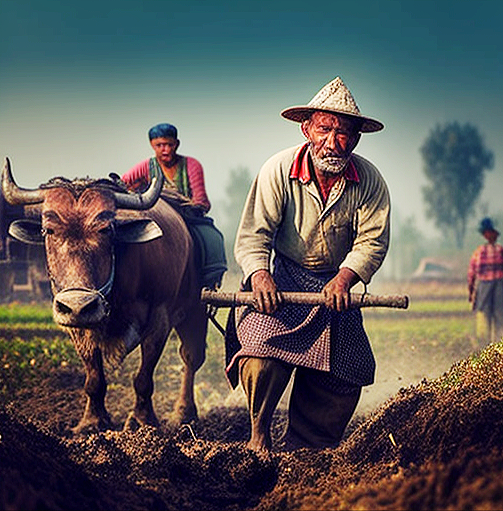
Agriculture in Nepal: A Comprehensive Analysis
Agriculture is the backbone of Nepal’s economy, contributing to more than one-third of the country’s GDP and employing over 65% of the workforce. Nepal’s geographical and climatic diversity has provided a unique opportunity for agricultural production, with the potential to sustainably increase crop yields, livestock productivity, and export value. Despite these advantages, the sector faces several challenges, including limited access to modern inputs, poor infrastructure, and the impact of climate change. In this article, we will explore the various aspects of agriculture in Nepal and suggest ways to overcome these challenges.
Table of Contents
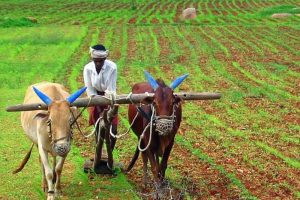
Agricultural Production in Nepal
Nepal’s agriculture sector is divided into two main sub-sectors: crop production and livestock production. The crop production sub-sector includes cereals, pulses, vegetables, fruits, and spices, while the livestock sub-sector includes cattle, buffalo, goat, sheep, and poultry. The country’s agricultural production is highly dependent on monsoon rainfall, which accounts for more than 80% of total precipitation. This makes Nepal’s agricultural production highly vulnerable to climate change, with the potential for droughts, floods, and other extreme weather events.
Also Read : Essay on Natural Resources in Nepal: An Overview
Despite these challenges, Nepal has made significant progress in agricultural production in recent years. The country’s cereal production has increased by 33% since 2000, while livestock productivity has also increased significantly. However, the sector still faces several challenges, including limited access to modern inputs, poor infrastructure, and low adoption of modern farming practices.
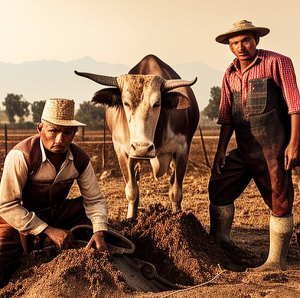
Challenges Facing Agriculture in Nepal
One of the primary challenges facing agriculture in Nepal is limited access to modern inputs. Farmers in Nepal lack access to quality seeds, fertilizers, pesticides, and other modern inputs, which hinders their productivity and limits their potential for growth. The government has attempted to address this issue by subsidizing inputs and promoting private sector investment in the sector, but progress has been slow.
Another challenge facing agriculture in Nepal is poor infrastructure. The country’s rural areas lack basic infrastructure such as roads, electricity, and irrigation, which hinders farmers’ access to markets and limits their productivity. The government has attempted to address this issue by investing in infrastructure development, but progress has been slow due to the country’s rugged terrain and limited resources.
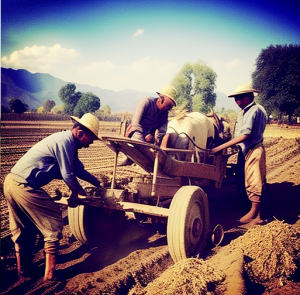
The impact of climate change is another challenge facing agriculture in Nepal. The country’s agriculture sector is highly vulnerable to extreme weather events such as droughts, floods, and landslides. These events can cause significant damage to crops and livestock, leading to decreased yields and income for farmers. The government has attempted to address this issue by promoting climate-resilient farming practices, but progress has been slow due to limited resources and capacity.
Suggestions for Overcoming Challenges
To overcome the challenges facing agriculture in Nepal, several strategies can be adopted. Firstly, there needs to be an increased investment in agricultural research and development to promote the adoption of modern farming practices. This can include research into new crop varieties, improved irrigation systems, and better soil management practices.
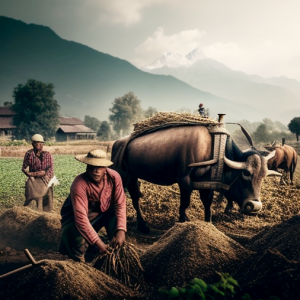
Secondly, there needs to be an increased investment in rural infrastructure development to improve farmers’ access to markets and increase their productivity. This can include the construction of rural roads, electrification, and irrigation systems.
Finally, there needs to be an increased focus on climate-resilient farming practices to mitigate the impact of climate change on the agriculture sector. This can include the promotion of drought-tolerant crops, improved soil management practices, and better water management practices.
Also Read : Mahatma Gandhi: Inspiring a Movement for Change
Agriculture is a vital sector for Nepal’s economy, providing employment to over 65% of the workforce and contributing to more than one-third of the country’s GDP. However, the sector faces several challenges, including limited access to modern inputs, poor infrastructure, and the impact of climate change. To overcome these challenges, there can be done to promote agricultural research and development, invest in rural infrastructure development, and promote climate-resilient farming practices. By addressing these challenges, Nepal’s agriculture sector can continue to grow and contribute to the country’s economic development .
Related Posts
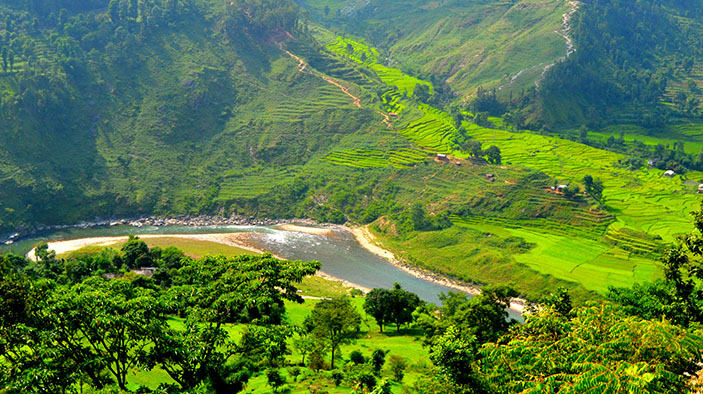
Essay on Natural Resources in Nepal: An Overview
Leave a reply cancel reply.
Your email address will not be published. Required fields are marked *
Save my name, email, and website in this browser for the next time I comment.
- Comments RSS
Sunday, March 28, 2010
NATURAL RESOURCES IN NEPAL: Forest, Water, Soil and Minerals
- Kaligandaki: 144MW
- Marsyangdi: 75MW
- Kulekhani I: 60MW
- Bhote Koshi: 36MW
- Khimti: 60MW
- Kulekhani: 32MW
- Copper: Buddha Khola (Bandipur), Gyari (Gorkha), Arghauli (Chisapani), Taplejung, Ilam, Baitadi, etc.
- Iron: Ramechhap, Labdhi Khola, Pyuthan, Bhainse, Kulekhani, Bhutkhola, Phulchoki, Ghatkhola, etc.
- Mica: Bhojpur, Chainpur, Lamjung, Dhankuta, Nuwakot, Sindhuligadhi, etc.
- Limestone: Chovar (Kathmandu), Baise (Makawanpur), Udayapur.
38 comments:
AWESOME POST, GREAT QUALITY CONTENT DUDE.thnks for this post...... WHATSAPP TRICKS
THanks friend it helpe
thanx for helping with my hw :)
thnx for helping me with my hw in ss in ilinous lincoln middle school
Tnx for imformation
Thanks for this post! helped me with my homework!
It's extraordinary. Thanks a lot for this information.
thanks its too much informative
Tq it is easy to do my homework
Thank you so much
unfartunatly, we are not geting chance to utilize it coz of bad habit of our leader
I did my hw thank u so much
Woo!!!! tnx dude this helped to complete my project.
Thanks for helping my hw
Thanks for helping
It's nice.Thank you for helping
Thanks ! It helped a lot to do my H.W........ # Very nice essay 👍👍👌👌👌👌☺️☺️☺️
Very bad for do homework😠😠😠😡😡😡
can you mention the source please
thnx for that great info :):):):)
Very nice information on natural resources thanks
Yeah 😡😠😡😡🤬🥺
I am not so satisfied with water resources but...it's pretty good..👌💜
Can you please write eassy on animals,plants ,
Thanks, because of this post I can get some ideas to do
I like cheese
https://www.garibyatri.com/
Thanks For Information.
Very Nice Post. I am very happy to see this post. Such a wonderful information to share with us. For more information visit here starting a blog .
Modafresh 200mg is highly effective pill but yet there some rare side effects have been recognized such as nausea, headache, dizziness, anxiety or difficulty sleeping.
You did a wonderful job of explaining the various aspects of the situation. If at all feasible, you should write an essay about Herbs for ManPower .
its a good way to grab nutrient and if you want to increase your knowledge so enroll now in Digital Marketing training course in kanpur
Post a Comment
Hit Counter
Did you like this site?
Blog archive.
- ► May (8)
- ► April (31)
- NATIONAL GLORY OF NEPAL
- FAMOUS MARTYRS OF NEPAL
- Major Religions
- Life in the Terai Region
- Life in the Hilly Region
- Life in the Himalayan Region
- NATURAL RESOURCES IN NEPAL: Forest, Water, Soil an...
- REGION OF NEPAL
- Environment Education
- Environment
- Population Education
- LAKES OF NEPAL
- Agriculture in Nepal
- THE RIVERS OF NEPAL
- THE MAHENDRA RAJMARG
- ELECTRICITY
- SOCIAL SERVICE
- Wild Animals in Nepal
- Human Rights in Nepal
- Some Important International Festivals
- Some Important Festivals
- The famous Festival of Nepal
- Social Harmony in Nepal
- A Famous Religious Place in Nepal
- Tourism place of Nepal
- THE HIMALAYAS
- THE SEASONS
- Municipalities by Districts, Zones and Development...
- Location of district in the Zone
- Districts, Zone and Development Regions of Nepal
- Honorable National Things of the Nepal
- NEPAL: SIZE,EXTENT AND BOUNDARIES
- Introduction
Our English Essay
We Provide you high quality of english Essays.Contact Us If you have any Problem on Writing Essay.
Search This Blog
Natural resources of nepal.

Your are Nepali con you fuck with me I ma also Nepal living in illam came and fuck together plz can you be my babe fucking patneer♥️♥️♥️
Oi khatey tero aama lai fuck gar
What the fuck is going on here 😂
Machikney Randi Ka baan haru teme haruko aama lai fuck gara muji Randi haru
Really a wonderful essay the conclusion of rhis essay is the super best
Please can you give me this essay in Nepali language.
Very good skill
Thank you Google for sharing all these things to us Nepali Kids of class 9
this help me in exam
Thanks for beautiful essay🥰 It will help in my exam🌹
very important essay in very simple and understandable language.
Minerals haru ko barema ni lekhdeko bhaye hunthyo ni it was more good if there was explainatiin about minerals
Thanks for the essay sharing with us it helps me to do a lot of homework thank you ☺☺
Post a Comment
Popular posts from this blog, water resources in nepal, importance of female education.

Natural Beauty of Nepal Essay
Nestled in the heart of the Himalayas, Nepal is a land of unparalleled natural beauty. From towering peaks to lush valleys, this country captivates the senses with its diverse landscapes and breathtaking scenery.
The majestic Himalayan range graces Nepal with some of the world’s highest peaks, including Mount Everest, the pinnacle of Earth’s beauty. As the first rays of the sun kiss these snow-clad giants, a mesmerizing play of light and shadow unfolds, creating a spectacle that words struggle to capture. The Annapurna and Langtang ranges further enhance Nepal’s panorama, offering a symphony of peaks that stand as sentinels to the country’s natural grandeur.
Beyond the mountains, Nepal’s valleys are adorned with pristine rivers and dense forests. The fertile plains of Pokhara, encircled by hills, reflect the ethereal beauty of Fewa Lake. The Annapurna Circuit, a trekking haven, winds through rhododendron forests and traditional villages, inviting adventurers to explore the raw, unspoiled beauty of the region.
Nepal’s diverse ecosystems harbor a rich variety of flora and fauna. The Chitwan National Park, a UNESCO World Heritage Site, is a sanctuary for endangered species like the Bengal tiger and one-horned rhinoceros. The park’s lush jungles and grasslands offer a glimpse into the untamed wilderness, reminding visitors of the delicate balance of nature that Nepal seeks to preserve.
The Phewa Lake in Pokhara reflects the towering Annapurna Range like a mirror, creating a picturesque setting that embodies serenity. The reflection of the surrounding mountains in the crystal-clear waters serves as a poetic reminder of the inseparable connection between nature and tranquility in Nepal.
Nepal’s cultural heritage is interwoven with its natural beauty. The ancient city of Kathmandu, with its temples and palaces, stands as a testament to the harmonious coexistence of human creation and the surrounding environment. The intricate architecture of places like Patan Durbar Square and the sacred Pashupatinath Temple adds a cultural dimension to Nepal’s scenic allure.
In conclusion, Nepal’s natural beauty is a masterpiece painted by the hands of time and the forces of nature. Its towering peaks, verdant valleys, and diverse ecosystems create a tapestry that not only delights the eyes but also nourishes the soul. Nepal, with its rich biodiversity and cultural heritage, is a sanctuary where nature and civilization dance in a timeless rhythm, leaving an indelible mark on all who are fortunate enough to witness its splendor.
Essay on National Bird of Nepal
Essay on Unemployment in Nepal
Essay on Agriculture in Nepal
What makes Nepal’s natural beauty unique?
Nepal’s natural beauty is distinguished by the awe-inspiring Himalayan range, including Mount Everest, the world’s highest peak. The diverse landscapes, from lush valleys to pristine lakes, contribute to a unique and captivating environment that sets Nepal apart as a natural wonder.
How can one experience Nepal’s natural beauty firsthand?
To experience Nepal’s natural beauty, embark on trekking adventures like the Annapurna Circuit or Everest Base Camp trek. Explore national parks such as Chitwan to witness diverse flora and fauna. Additionally, visit scenic destinations like Pokhara, with its enchanting Phewa Lake, to immerse yourself in the country’s serene landscapes.
What role does Nepal’s cultural heritage play in enhancing its natural beauty?
Nepal’s cultural heritage, showcased in cities like Kathmandu, complements its natural beauty. The ancient temples, palaces, and traditional architecture blend seamlessly with the surroundings, creating a harmonious fusion of human creativity and natural magnificence. This cultural dimension adds depth to Nepal’s allure, making it a holistic destination for those seeking both natural and cultural experiences.
Leave a Comment Cancel reply
Save my name, email, and website in this browser for the next time I comment.
This site uses Akismet to reduce spam. Learn how your comment data is processed .

- Privacy Policy
- Terms of Use
- Essay | Paragraph
- ArticleFeed
Essay on My Country Nepal | 700+ Words
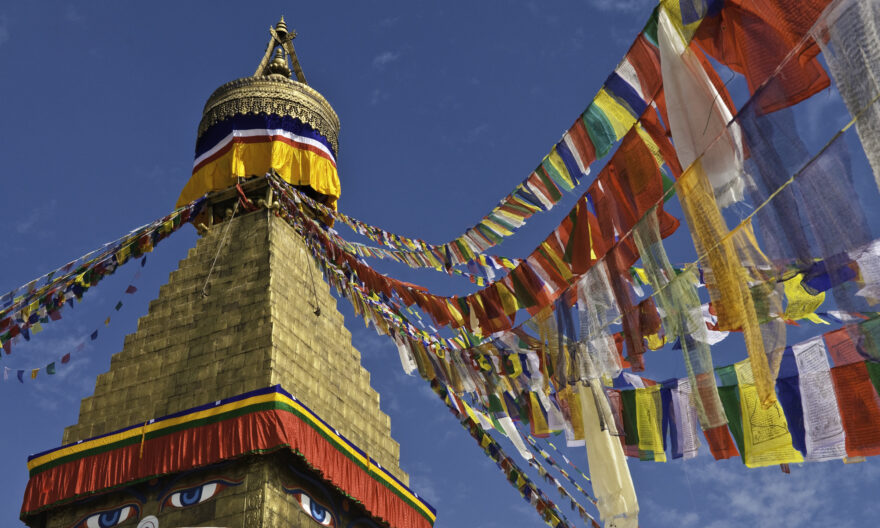
Essay on My Country Nepal | Paragraph Writing 600+ Words
My country is the land of diversity and is very unique. My country Nepal lies in the Southern part of Asia. It is surrounded by two powerful countries India and China and is landlocked. It has an area of about 147,516 sq. kilometers. Although small, my country is diverse both in terms of geography and culture. It is like a beautiful garden with many people from different backgrounds. It is a country with a variety of castes and cultures.
Nepal’s flag is also the most unique to the world. Our country’s flag stands out among the rest due to its shape. The colors and symbols of our flag also represent the country’s peace-loving and friendly nature, bravery, and immortal history.
In my country Nepal, we can find places with altitudes ranging from as low as 70 meters to the highest peak in the world 8848 meters. It is divided into 3 regions Terai, Pahad, and Himal with the temperature of the place varying from hot to cold. Each region has its own specialty. Nepal’s Himalayan regions have high and mighty mountain ranges that are breathtaking to look at. Out of the world’s top 10 highest peaks, 8 of them fall in my country Nepal.
For You: Essay on Importance of English Language
The Hilly region is full of green hills and a very cool temperature to live in. It has many historical and religious places. Terai too is mostly a flat stretch of land with fertile soil. It is the granary of Nepal where most crops are grown. It is also an industrial region of our country.
The flora and fauna of my country are also very diverse. The difference in altitudes makes our country have various ecosystems. Foreigners from all over the world pay thousands of dollars just to see our country’s reach of flora and fauna, rivers, lakes, cliffs, waterfalls, snowcapped mountains, and many other beautiful landscapes. The natural beauty of my country Nepal is difficult to find in other places.
Our country also has sites of great religious and historical importance where thousands of pilgrims visit every year. Places like Pashupatinath, Muktinath, Lumbini, Swyambunath, etc are very popular. It is already a pride to have come from such a country.
Essay on My Country Nepal
Our country also ranks in the top 5 for water resources. For such a small country to have rich water resources it is a boon. If fully utilized we can provide electricity to other countries too. Important personalities like King Janak, Gautam Buddha, Arniko, Bhrikuti were also born in Nepal. They all carry historical and religious importance even up to date. Our country’s warriors and commanders are still known today for their bravery and courage. It is also the reason our country never has to celebrate independence day as we never were colonized.
Nepal is also blessed with people of different backgrounds and ethnicity. In the past, many people had migrated to Nepal and settled here and hence the diversity. My country Nepal is also secular and respects all religions equally despite the numbers. There are 126 castes in Nepal and behind them, every culture has its significance. Each culture has its unique festivals and traditions. People also celebrate each other’s festivals with great fun. Nepali people are known for their hospitality and friendliness too.
But even after nature blessing our country, we have not been able to fully utilize it. Problems such as corruption and political instability run deep in the country. Our natural resources are not being taken care of properly and our country is being poor day by day. People are rich but the country is poor. Poverty is also seen in our country. Lack of proper management of wastes has also polluted our water and slowly destroying our forests. This also means our plants and animals are slowly being extinct. Illegal hunting and farming of precious animals and plants are also ruining our ecosystem.
This is why to save our country from further danger and poverty proper management and a responsible leader are required. The citizens of our country should also feel responsible for the country and not only blame the leaders. Proper plans and policies should be required to protect our resources. Social evils such as discrimination should also be tackled. Conservative-minded people should be given awareness and strict punishments for corruption and other illegal acts should be given. Employment opportunities should also be created as many people are leaving the country for jobs abroad.
Other Related Essays
- Essay on Guru Purnima
- Essay on Teej Festival
- Essay on Dashain Festival
- Reveel Protocol Potential Airdrop Backed by Binance
- KiloEX Confirmed Airdrop Invested By Binance Labs
- Chance of Getting Two Potential Airdrop | Backed by Polychain, BinanceLabs and Others
- Caldera Potential Airdrop Invested $9M By Sequoia Capital And Dragonfly
- Polyhedra Network Potential Airdrop biggest Investors are Binance Labs, Animoca Brand, Polychain
Greetinglines
Best Greetings For Loved Ones
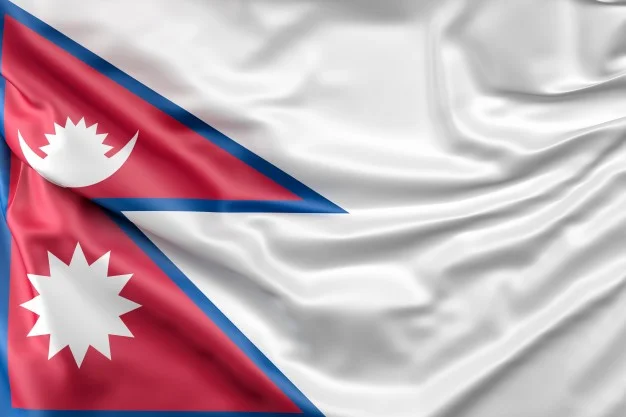
Essay on My Country Nepal For Students
If there is a country’s flag that stands out among all other countries it is the flag of Nepal . Our flag is very unique and cannot be compared to other countries’ flags due to its shape. It also has a hidden meaning behind it which represents the country’s peace-loving and friendly nature, bravery, and immortal history.
My country Nepal is situated between two countries, India and China. Although it is sandwiched between international powers, conflicts have not happened between any, and peace remains. Nepal is a country of various castes and cultures. In other words, it is like a beautiful garden of flowers with people of different ethnicities and backgrounds.
My country Nepal is not only unique for its flag but also its geographical terrain, the variety of castes and cultures you can find, and the rich history of it. It is the land of various great places and important figures that people know far and wide. The temperature here spans from cool to hot and is a heaven for residing in.
There are about 126 castes in Nepal each with its own rich history and culture which makes Nepal a rich place for culture. Some dating back to the millenniums. Not only that, our country is very rich in its geographical terrain. From the lowest point of just 70 Meters from sea level to the world’s highest peak Mt. Everest (8848.86 meters) , we have temperature scales that vary from place to place. It is divided into three regions, Terai, Hilly, and Himalayas each according to their altitude and geographical differences.
Himalayan regions have high and mighty Himalayas that are breathtaking to look at. Out of the world’s top 10 highest peaks, 8 of them fall in my country. It is already a great pride to have come from such a country. The diverse flora and fauna, beautiful landscapes, lush and green jungles, historical and religious places in Nepal are enough to gather the attention of foreigners and locals too. People from all over the world pay thousands of dollars just to see our country’s snow-capped mountains, rivers, cliffs, waterfalls, other beautiful landscapes, the rich flora and fauna, and sites of great religious and historical importance. It just doesn’t end there.
📌 Read – Essay on the Importance of English Language
Our country ranks in the top 5 for the richest in water resources. With just a small country with an area of 1,47,181 sq kilometers, it has the potential to fuel hydropower worth 2% of the entire world. It may look small in number but taking our country’s small area in context, it is a potential incomparable to all. The Terai region holds fertile land and smooth flowing waters that are excellent for farming and cultivating.
Nepal is also known as an agricultural country where 60% of the people here follow agriculture as their work. Our country also has huge historical importance. Gautama Buddha the founder and preacher of Buddhism which is practiced worldwide was also born in Nepal. Buddhism is known to preach peace and non-violence and to love everyone. King Janak is also an important figure who holds great importance to communities in Nepal.
Other personalities include Bhrikuti, Araniko, etc. Our country is also known for its bravery. Our country never has to celebrate Independence day as we were never under the rule of any other. We stood and fought against the Britans and other Mongol countries. Brave Gorkhalis were united after a long struggle and fought their way to preserve their country. The courage and bravery of Nepali people are also know world wide. Many brave Gorkhalis went to fight under countries in world wars and won various colors and medals. This brought our country so much respect that we even enjoy it for granted to date.
Although our country’s history, culture, terrains, and achievements make anyone feel proud, the power struggle for the politicians, previous kings, and presidents have made the country weak and fall in the developing country category. Our rich natural resources have not been utilized and we have fallen way behind. Corruption is widely prevalent in our country and the loans we have taken from other countries are in a large number. The amount of food and other materialistic consumption has made Nepal import more and export less.
Our country is poor but the people here are rich. This is because of the corruption and the illegal working/trading that has been done. The government has not made significant progress and the people aren’t responsible. Although I feel proud to be A Nepali, the condition of my country makes me feel bad. People should feel responsible and carry out their duties and not just complain about the government.
The government too should implement proper policies and rules and enforce them accordingly. Utilization of our natural resources should be done in an effective way and social evils such as discrimination according to castes and genders, other superstitions should be slowly removed. Centralized development should stop and we should control the people moving out to other countries with their skills that are wasted abroad. This way we can slowly develop our country.
Essays on Other Topics
- Essay on Mother – 800+ Words Paragraph
- Essay on Pollution | 800+ Words Paragraph on Pollution
- Essay on Importance of Discipline
- Essay on Globalization | 800+ Words Paragraph on Globalization
If you love our posts the consider following us on our social media channels Twitter @ GreetingLines and Facebook @ GreetingLines , our you can directly reach us via Contact Page .

You May Also Like

Essay on Romeo and Juliet | Paragraph on Romeo & Juliet

Is It Bad That Students Use Online Essay Writing Services?

Essay on Technology | 800+ Words Paragraph on Technology
28 thoughts on “ essay on my country nepal for students ”.
Thank you so much sir for helpful essay.
Thanks a lot sir .😊👨 its give to get new ideas😊
It’s my humble request to you.that plz write an essay on my country,my paradise.🙏
Thankyou for your essay. It really helped me.
Thank you so much sir for helpful essay.Actually I was searching for essay on my country and luckily found ….
░░░░░░▄████▄ ░░░░░▐▌░░░░▐▌ ░░▄▀▀█▀░░░░▐▌ ░░▄░▐▄░░░░░▐▌▀▀▄ ▐▀░▄▄░▀▌░▄▀▀░▀▄░▀ ▐░▀██▀░▌▐░▄██▄░▌ ░▀▄░▄▄▀░▐░░▀▀░░▌ ░░░░█░░░░▀▄▄░▄▀ ░░░░█░█░░░░█░▐ ░░░░█░█░░░▐▌░█ ░░░░█░█░░░▐▌░█ ░░░░▐▌▐▌░░░█░█ ░░░░▐▌░█▄░▐▌░█ ░░░░░█░░▀▀▀░░▐▌ ░░░░░▐▌░░░░░░█ ░░░░░░█▄░░░░▄█ ░░░░░░░▀████▀
░░░░░░▄████▄ ░░░░░▐▌░░░░▐▌ ░░▄▀▀█▀░░░░▐▌ ░░▄░▐▄░░░░░▐▌▀▀▄ ▐▀░▄▄░▀▌░▄▀▀░▀▄░▀ -: ▐░▀██▀░▌▐░▄██▄░▌ ░▀▄░▄▄▀░▐░░▀▀░░▌ ░░░░█░░░░▀▄▄░▄▀ ░░░░█░█░░░░█░▐ ░░░░█░█░░░▐▌░█ ░░░░█░█░░░▐▌░█ ░░░░▐▌▐▌░░░█░█ ░░░░▐▌░█▄░▐▌░█ ░░░░░█░░▀▀▀░░▐▌ ░░░░░▐▌░░░░░░█ ░░░░░░█▄░░░░▄█ ░░░░░░░▀████▀
You are great sir 😚✌️🤞🙏
I really like your essay it helps me to get new ideas and thoughts 😃💕💕💕💕 Thanks for your nice essay.
Thank for your kind words we appreciate it 😉
Hi I am new user
Thank you Alot sir ❤
Your Welcome 😉
Thank yuh sir. For the great essay. This helps us for getting ideas to write an essay
Thank you so much for such amazing compliment 😊
Am proud to be nepali ❤️❤️❤️🇳🇵🇳🇵🇳🇵🇳🇵 so I knew about the history of our country it’s like a story ❤️❤️🇳🇵🇳🇵🇳🇵
Ya it’s really good to visit in Nepal. Nepal has most beautiful place to look.
Thanku sir for such a helpful and true essay which is outstanding💕💕💕
Thanku sir for your such a helpful and true essay which is outstanding💕💕💕
we are glad that you liked it 😉
Hello there! This post couldn’t be written any better!
Reading this post reminds me of my old room mate! He always kept chatting about this. I will forward this article to him. Fairly certain he will have a good read. Thanks for sharing!
I love what you guys are up too. This kind of clever work and exposure! Keep up the superb works guys I’ve incorporated you guys to my blogroll.
Wonderful blog! I found it while searching on Yahoo News. Do you have any tips on how to get listed in Yahoo News? I’ve been trying for a while but I never seem to get there! Thank you
Hey There. I found your blog using msn. This is a very well written article. I will be sure to bookmark it and return to read more of your useful info.
Thanks for the post. I will certainly return.
Hello! Do you know if they make any plugins to help with Search Engine Optimization? I’m trying to get my blog to rank for some targeted keywords but I’m not seeing very good results. If you know of any please share. Many thanks!
You can Use rank math or Yoast SEO they are very good you can try both but I would suggest you to use Rankmath cause it is more user friendly but in the end, it depends on you;)
This colours has navigated right into my heart.
This post is so insightful and well-written! I love how you presented the information in a clear and engaging manner. Keep up the great work
Leave a Reply Cancel reply
Your email address will not be published. Required fields are marked *
Save my name, email, and website in this browser for the next time I comment.
- Privacy Policy

- English Literature
- Essay Compositions
- PVA Class 8
Essay on Water Resources in Nepal

Water Resources in Nepal
Post a comment, search in this blog, popular posts.

BLE English Unit 2 Solution

Holi Class 8 Solution

BLE Class 8 Unit 1 Problem Solved

Essay on Road Transportation In Nepal

Essay on Natural Disasters In Nepal

My Country My Pride

Social Harmony In Nepal Essay

Essay on Pollution In Nepal

Essay on Agriculture in Nepal
Thanks a million.
Copyright (c) 2020 Problems Solved All Rights Reseved
Menu Footer Widget

IMAGES
VIDEO
COMMENTS
Nepal is a country that is rich in natural resources, including water, forests, minerals, and fertile land. These resources are vital to the economic development of the country and play a crucial role in the lives of millions of people. In this article, we will discuss the importance of natural resources for Nepal's economy.
However, research into the country's hilly terrain has shown that there are a few deposits of metallic, non-metallic minerals, fuel minerals, and decorative minerals. These minerals include the likes of gold, limestone, mica, iron ore, copper, and others. While there are suspected oil deposits in places such as Pyuthan, Nepalgunj, and ...
Nepal's economy depends on its natural resources (ADB, ICIMOD 2006). 133. This is most evident for hydropower, agriculture and forestry, but natural resources are also an important factor in Nepal's attractiveness as a tourism destination. Manufacturing, and to some extent services, also require water availability; and the
Nepal is rich in natural resources such as water, forests etc. If these resources are properly utilized, the development of country moves ahead. Natural resources can be utilized for various purposes. For example, water resources can be used for agricultural development, for industrial development, for the development of the tourism factory, to ...
Water resources, particularly rivers, lakes, and glaciers, are considered the most prominent natural resource in Nepal. With over 6,000 rivers and abundant water sources, Nepal ranks second in the world in terms of water resources. These resources are crucial for irrigation, hydropower generation, and supporting various economic activities.
Because of the accessibility of these natural resources, life is conceivable on Earth. Without these resources, life would not have been conceivable on Earth. In this essay, let's discuss Nepal's natural resources. Nepal, which has 147,181 square kilometres and a population of about 30 million, is located between China and India.
The situation in Nepal is compounded by three factors. First, like in many low-income developing countries, the degradation of Nepal's natural resources is closely tied to unrelenting pressure exerted on limited arable land by a large and rapidly growing population, almost 90 percent of whom depend solely on agriculture for their livelihood.
Federalism in Nepal (SMFFN) Programme in collaboration with The Asia Foundation. The views expressed here are those of the authors and do not reflect the views of the UK Government. Suggested Citation: Steytler, Nico (2021) The Pivotal Role of The National Natural Resources and Fiscal . Commission in Nepal's Intergovernmental Fiscal System.
natural resources sharing in the federal Nepal. The meeting aimed at with seeking experts' views on resource sharing in federalism, and mapping out diverse discourses and positions. This report captures the main issues and potential contestations that emerged during the meeting. In the
The paper addresses natural resource management practices in Nepal which are adopted and still remained to adapt especially for the management of land, watershed, forest and other plants, and ...
Nepal is a landlocked country in between two big giant countries, China to the north and India to the East, west, and south. It lies in South East Asia with an area of 147181 sqm. km.Let us discuss the natural resources of Nepal. Major Natural Resources of Nepal 1. Forest - Major Natural Resources of Nepal
Ans:- A water resource is the most important natural resources of Nepal. Nepal is the second richest country in the world on the basis of water. There are more than 6000 rivers in Nepal. The total length of rivers in Nepal is estimated to 45,000 Km. theoretically hydropower of Nepal is 83,000 Megawatt.
Executive Summary. 1. Purpose of the Water Resources Strategy. Every Nepali citizen should have access to water sufficient to meet basic needs, including drinking, cooking and sanitation. Every citizen should also benefit from Nepal's abundant water supply through the production of food and energy at reasonable cost.
Nepal - Agriculture, Tourism, Trade: Landlocked, lacking substantial resources for economic development, and hampered by an inadequate transportation network, Nepal is one of the least developed nations in the world. The economy is heavily dependent on imports of basic materials and on foreign markets for its forest and agricultural products. Nepal imports essential commodities, such as fuel ...
Also Read : Essay on Natural Resources in Nepal: An Overview. Despite these challenges, Nepal has made significant progress in agricultural production in recent years. The country's cereal production has increased by 33% since 2000, while livestock productivity has also increased significantly. However, the sector still faces several ...
Some of the important natural resources of Nepal are: Forest, Water, Soil or Land. FOREST Forest is one of the important natural resources. Different types of forests are found in different regions of Nepal. ... If at all feasible, you should write an essay about Herbs for ManPower. April 11, 2023 at 2:56 AM Urmila said ...
Nepal has a variety of valuable mineral resources that could be important for its economic development if properly utilized. Minerals are crucial for industrial development, job creation, and reducing reliance on imports. Despite being an least developed country, Nepal aims to graduate to middle-income status by 2030. Nepal is located in the mineral-rich Himalayan region and has identified 63 ...
Essay about Natural Resources of Nepal.Human beings as well as other living beings need different natural things to live. Beings use such things to eat, save, travel or breathe or drink. There are many kinds of natural resources in the world. Because of the selfish and inhuman behaviour of son people, many people and animals are suffering from many problem of natural resources like gas and ...
Essay on Natural Resources in Nepal | natural resources essay in englishArticle Link:- https://abinas.com.np/natural-resources-of-nepal/My Website Link :- ht...
In conclusion, Nepal's natural beauty is a masterpiece painted by the hands of time and the forces of nature. Its towering peaks, verdant valleys, and diverse ecosystems create a tapestry that not only delights the eyes but also nourishes the soul. Nepal, with its rich biodiversity and cultural heritage, is a sanctuary where nature and ...
Essay on My Country Nepal. Our country also ranks in the top 5 for water resources. For such a small country to have rich water resources it is a boon. If fully utilized we can provide electricity to other countries too. Important personalities like King Janak, Gautam Buddha, Arniko, Bhrikuti were also born in Nepal.
My country Nepal is situated between two countries, India and China. Although it is sandwiched between international powers, conflicts have not happened between any, and peace remains. Nepal is a country of various castes and cultures. In other words, it is like a beautiful garden of flowers with people of different ethnicities and backgrounds.
But as we all know among them, rivers are the most important water resources in Nepal as there are more than six thousand rivers and its tributaries. That is why they make us rich in water resources. The prominent rivers in Nepal are Mechi, Koshi, Karnali, Bagmati, Narayani, Gandaki and Mahakali. Among them, the Koshi, in the eastern part of ...